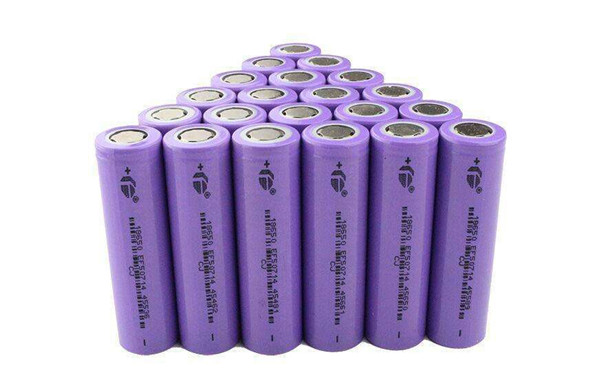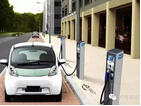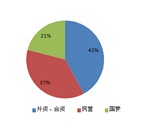 "Our mission was to prevent unsafe products from entering the market, and now our job is to help secure products to enter the market." This is not just a word, but also said: "We are responsible for preventing unsafe products from entering the market," said Mr. Nobel Brown, former CEO of US Security Test Labs (UL) Change, it is the concept of change.
"Our mission was to prevent unsafe products from entering the market, and now our job is to help secure products to enter the market." This is not just a word, but also said: "We are responsible for preventing unsafe products from entering the market," said Mr. Nobel Brown, former CEO of US Security Test Labs (UL) Change, it is the concept of change.
High safety, high quality products are required for the global market
For the rapid development of the lithium industry is concerned, the safety of lithium batteries is likely to directly affect the fate of many applications of the market, from the data point of view the impact is indeed more serious. In fact, from 2006 onwards, a fire worth of 5-6 billion US dollars has been a lot of examples. For example, the 2016 Samsung Galaxy Note 7 large range of battery fire explosion, let it lose nearly 700 million US dollars. But compared to Samsung Electronics sales decline, profit decline, the market value of evaporation and other chain losses brought about by the consequences of brand trust crisis is even more serious. For lithium enterprises, product safety is life, security issues need to alarm bells.
Today, after the storm of the domestic power lithium battery industry began to transform, is to achieve the quality and quantity of double upgrade. Data show that the last five years, power cell monomer than the energy to enhance the 1 times, has reached 200Wh / Kg above, the system unit cost has dropped to 1.4-1.5 yuan / Wh level.
In addition, 2017 China's power battery planning capacity has exceeded 170GWh, is expected to 2018 China's lithium battery cell output value will reach 148.8 billion yuan, power battery industry has become a new growth point of China's national economy. At the same time, the rapid rise of the global new energy automotive industry, as well as energy storage, unmanned aerial vehicles, balance vehicles and other segments of the field continue to explore and grow, but also for the development of China's lithium industry provides a new R & D direction and profitability.
However, whether it is power battery products in the domestic new energy vehicles, energy storage, echelon use and other fields of application, or domestic lithium battery products "going out", "security and standardization" is always the industry does not open the topic. Therefore, how to build a unified standard system to enhance product safety; how to adapt to the corresponding standards of overseas markets, expand product sales market, these problems need to domestic lithium battery enterprises in advance thinking and layout.
Complicated application security issues
Speaking of security issues, we have to mention the probability of accidents. In fact, we usually talk about the probability of lithium battery accident mean in the more moderate conditions, if it is in the electric car, including vibration, collision and many other cases, this probability will be greatly improved, lithium battery application security is a comparison complicated question.
Not long ago, the US AAA insurance company said that compared to the same level of cars, Tesla ModelS and ModelX claims frequency and pay the cost is relatively high. As a result, the company is considering raising the premium rates for both models. Although this is only for Tesla a car business, but it is the impact of the global scope.
The United States is known as the "wheel of the country", the automotive industry mature and developed, the Chinese industry in many ways to learn from the United States, such as the new energy vehicle system. If Tesla is really prescribed "pay more insurance costs", will inevitably affect the insurance costs of Chinese electric vehicles.
And similar insurance costs, accident liability division and other lithium battery application security problems there are many, but the reality is that the safety accident occurred before the lithium battery through the safety certification. Therefore, we found that strict safety testing methods and the occurrence of security incidents, and not much correlation, this is a very troublesome thing.
In addition, the domestic lithium battery products "going out" more to "go up", enterprises not only to sell products, but also sell word of mouth, selling high-end brands, specifically how to achieve? These are urgent problems to be solved.
Based on the strong demand of industry and enterprises and the healthy development of industry considerations, UL and China Chemical and Physical Power Industry Association Power Battery Application Branch will be signed in UL Suzhou laboratory cooperation memorandum of understanding, strong cooperation. During the period, "UL Battery Global Access Service", "Battery Safety Risk and Case Sharing" and other special seminars, by the UL chief engineer and senior R & D experts to bring the standard related to market information and industry dynamics.
The meeting will be through the battery business, vehicle companies in-depth communication on the domestic lithium battery into the international market feasibility, UL power battery standards, power batteries and energy storage batteries in the field of security and environmental problems and technical bottlenecks to communicate And communication, to explore the standardization of lithium battery direction.
UL certification:
UL was established in 1894, the United States is currently the world's most authoritative product safety testing and certification of one of the institutions. With the mission of "creating a safer world", UL is dedicated to assessing the safety performance of products, materials and systems. 2003 UL officially stationed in China, UL Suzhou laboratory is UL in mainland China's first laboratory, UL is also the main test center in China. UL certification for Chinese products into the United States and even the North American market is essential.
It is understood that in the laboratory for testing, but a step in UL certification, to obtain UL certification mark, in addition to providing products to send samples to detect, there are a series of certification procedures, but also need to receive four times a year by the UL sent Of the engineers to the production site inspection to confirm the factory produced products and inspection products consistent.
















 RCCN WeChat QrCode
RCCN WeChat QrCode Mobile WebSite
Mobile WebSite







